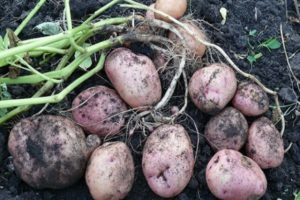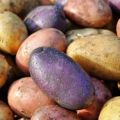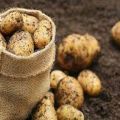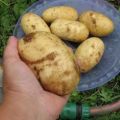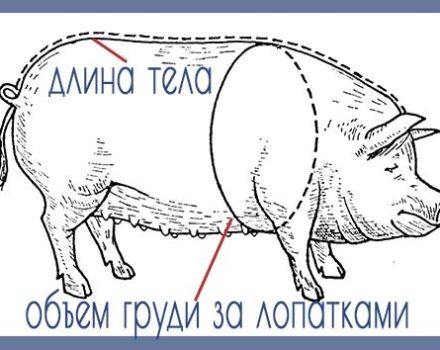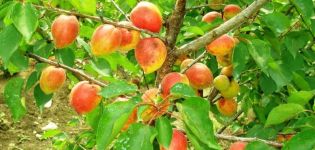Description of the Rocco potato variety, recommendations for growing and care
Most of the villagers and summer residents involved in vegetable growing plant potatoes on their plots. Before planting, it is important to choose not only good and quality tubers, but also a productive variety - Rocco potatoes, one of the best varieties. The future harvest will depend on this. What is this variety good for and how to fruitfully grow a vegetable in your garden?
Description of culture
Rocco is bred by Dutch breeders and is popular all over the world. It is grown in Australia, the Netherlands, Spain, China, France and other foreign countries. In Russia, the variety began to be cultivated in 2002, its subspecies are common in Belarus, Moldova, Kazakhstan and Ukraine.
The fruits are in demand among the population, as they are not susceptible to diseases - the pulp is clean, without eyes.
The Rocco potato variety is high-yielding, 1.5 kilograms of vegetables grow from one bush, and growers harvest up to 600 quintals of quality potatoes from one hectare of land in a productive year. The fruits are of high quality - the amount of marketable vegetables from the site is over 95%.
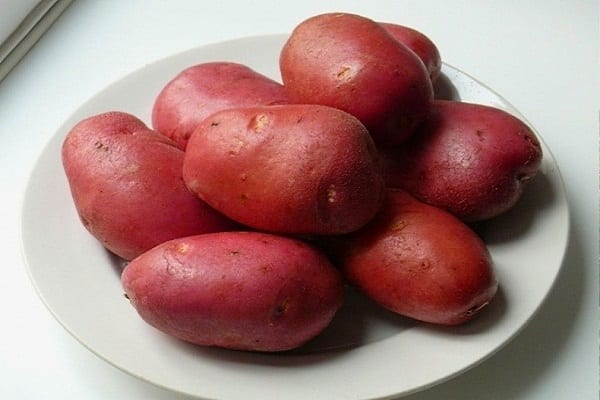
This is a type of table purpose - used in restaurants to prepare fries and other popular dishes. Also, the variety is widely used in the home kitchen - delicious "pancakes", dumplings, mashed potatoes are obtained from the fruits. The taste of potatoes is sweetish.
It has a light pink skin. The pulp is creamy yellow, the fruits contain up to 16% starch. When boiled, the fruits do not change color.
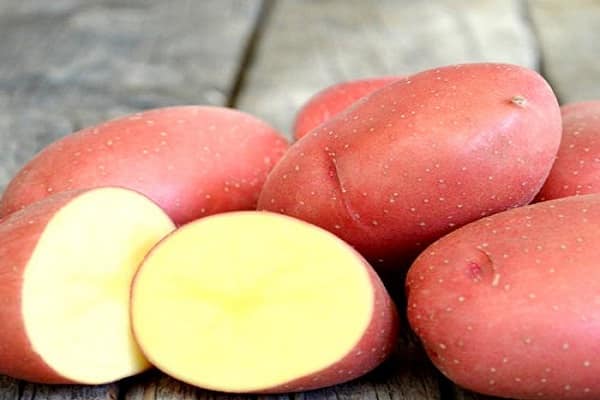
Due to its high transportability and keeping quality, the variety is successfully exported. It is grown by large farms for the sale and production of starch. Ordinary summer residents love the variety for its unpretentious care and high yield rates.
Growing potatoes
To planted potatoes gave a high yield, it needs to be planted in fertile land and taken care of. What exactly needs to be done, we will consider further.

Preparing the soil for planting
For planting, the soil is prepared since autumn, organic fertilizers are applied to the field before plowing - cow dung, humus, compost. Then the field is plowed up and left for the winter. The soil for planting is loamy, sod or sandy with the addition of black soil.
In the spring, when the last snow melts from the fields, the land is again cultivated and hilled. Only after these manipulations are potatoes planted.
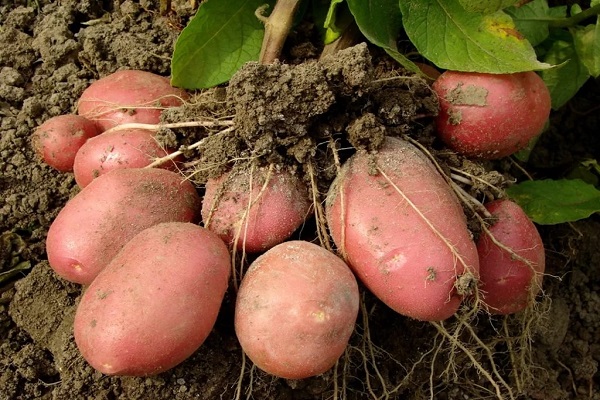
Landing
There are several ways to plant potatoes:
- trench landing;
- smooth fit;
- comb.
When trench planting, the rotting properties of potatoes, the weather conditions of the region and terrain are taken into account, if it rains constantly there, then it is better to choose a ridge planting method.With the trench method, the tubers are planted in the aisles and covered with soil from the rows.
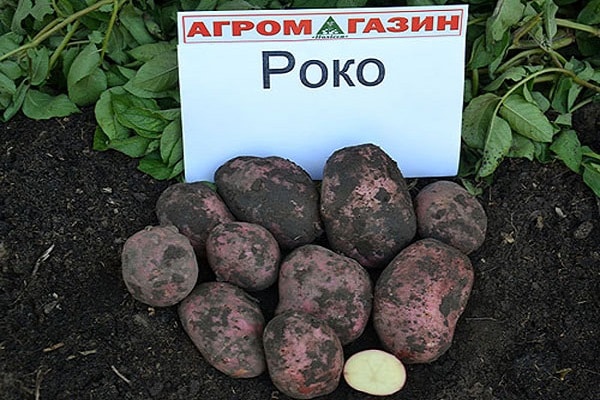
Smooth landing means no rows in the field, it is better to plant together. One digs holes along the marked lines in the rows, and the other lays the tubers. When digging the next hole, the soil from the shovel is poured into the last hole with potatoes.
Ridge sowing is performed by planting in rows formed by hilling. This method is used if a lot of moisture collects on the site from rain or a nearby reservoir. To prevent the tubers from rotting from increased moisture, they are raised above ground level.

The distance between the tubers is determined depending on the size.
- Between tubers - 30 centimeters.
- Between rows - 70 centimeters.
- Planting depth - 10 centimeters.
They take into account the size of the tubers - the small ones are planted closer to each other and higher. Bigger ones go further. After sowing, it remains to take care of the plants and wait for the harvest.

Potato care
There are features of caring for a potato field, including:
- Weeding.
- Pest control.
- Loosening the soil.
- Watering.
If it rains once a week in your area, then this is enough for the tubers to form well. If the weather is dry, the beds will need to be watered at least twice a week.

Weeding is vital for plant growth. If you start the garden, then the roots of the weeds will not allow the tubers to develop. All the nutrients will go to the weeds and the summer of work will be wasted.
Loosening of the soil or hilling is carried out 3-4 times per season to shake the hardened soil layers above the plantings. In a loose, soft environment, roots and tubers grow better, resulting in an excellent harvest.
The Colorado potato beetle is the most dangerous pest for young shoots and during flowering. If the larvae eat the flowers, then the harvest will be poor. Therefore, gardeners are fighting these beetles and their larvae.
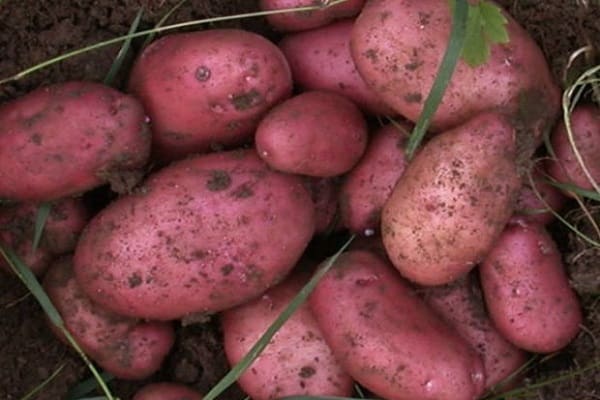
There are many parasite insecticides on the market, but the most popular is currently Regent from the Colorado potato beetle and other pests in the field. When treating bushes with poison, after two weeks the poisonous properties disappear by themselves, therefore, after treatment new potatoes can be dug out only after 2-3 weeks.
There is a traditional manual method for getting rid of insects. But it is convenient when planting small plots with potatoes, if a whole field is planted, it will not be possible to collect all the beetles manually.
With proper care of the bushes, the crop will delight its owners. But it is important not only to grow potatoes, but also to harvest and preserve them correctly.
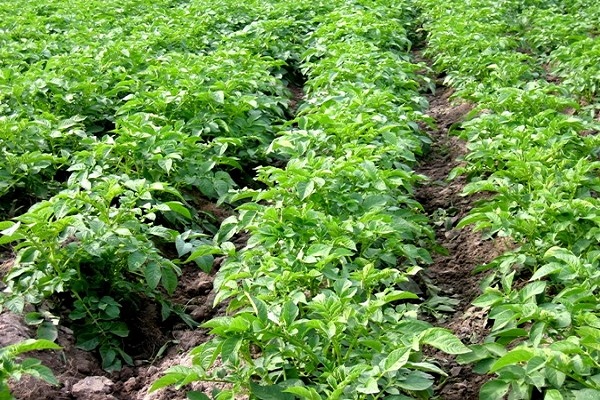
Harvesting and storage
Harvesting is done in each region at different times. The main indicators of the need to harvest are:
- lodged tops;
- faded and yellowed plant stems;
- the size of the tubers.

So, in regions with average temperature indicators, potatoes are dug up in September, in the southern regions they are harvested in October. The main thing is that the potatoes are ripe. You should have time to clean up before the onset of frost. After harvesting, the tubers are dried in the sun or in a place protected from rain.
Sort out, putting aside rotten and low-quality tubers. Fruits with a flat surface without cuts and signs of decay are placed in the cellar for storage. It is important not to lower tubers for wintering that have not completely dried out. One low-quality fruit will destroy the entire harvest, so the preparation of vegetables is taken seriously.

Since the description of the variety indicates that it is resistant to many diseases, it will be well stored if the recommendations outlined above are followed.
The storage room must be cool and dry. The optimum temperature in winter is 4 to 6 degrees. If it is colder there, then the vegetables will freeze; if it is warmer, they will begin to sprout and dehydrate. The potatoes will become soft and unsuitable for consumption. To prevent potatoes from becoming ill during storage, they are covered with bags, cardboard or straw.
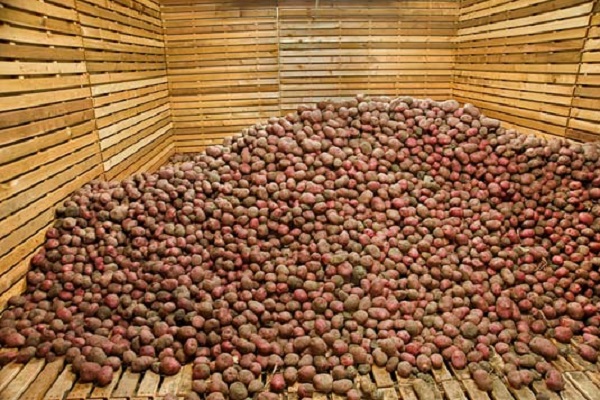
Review of Rocco potato variety reviews
Over the past decades, the variety has become popular among growers and summer residents; it has received numerous reviews from summer residents. Let's consider some of them.
Irina Vladimirovna, a gardener with ten years of experience from Kostroma: “I plant the Rocco variety all the time and always get a good harvest even on unfertilized soil. Since the site is large, we fertilize it once every three years with organic matter. We do not use minerals at all. The potato grows very well; there are always young potatoes on the table in the middle of summer. The tubers are large, without eyes and diseases. Stored well too. I advised all the neighbors this variety, now at the dacha almost all potato fields are blooming in lilac color.
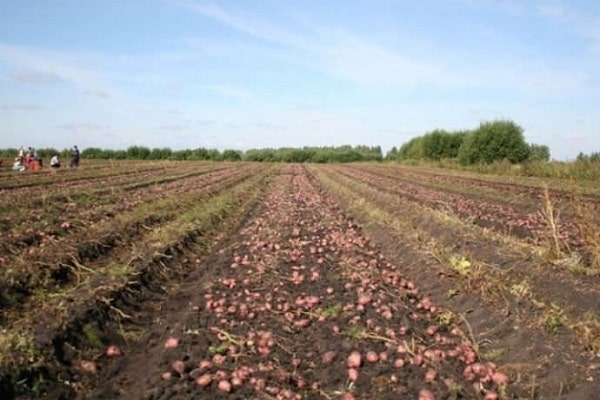
Dmitry Ivanovich, summer resident from Novgorod: “Last year I planted Rocco's potatoes for the first time and decided to leave a review. The variety perfectly took root on the site, all the bushes crawled out almost at the same time, the green mass is powerful, healthy, even the Colorado beetles could not spoil it. And the potatoes are delicious and beautiful, the tubers, one to one, are pink. Both me and my family really liked the variety. I left the seeds for the next year, we will grow again. "
If you follow the rules of cultivation, a rich harvest of healthy tubers will grow from the Rocco variety!


